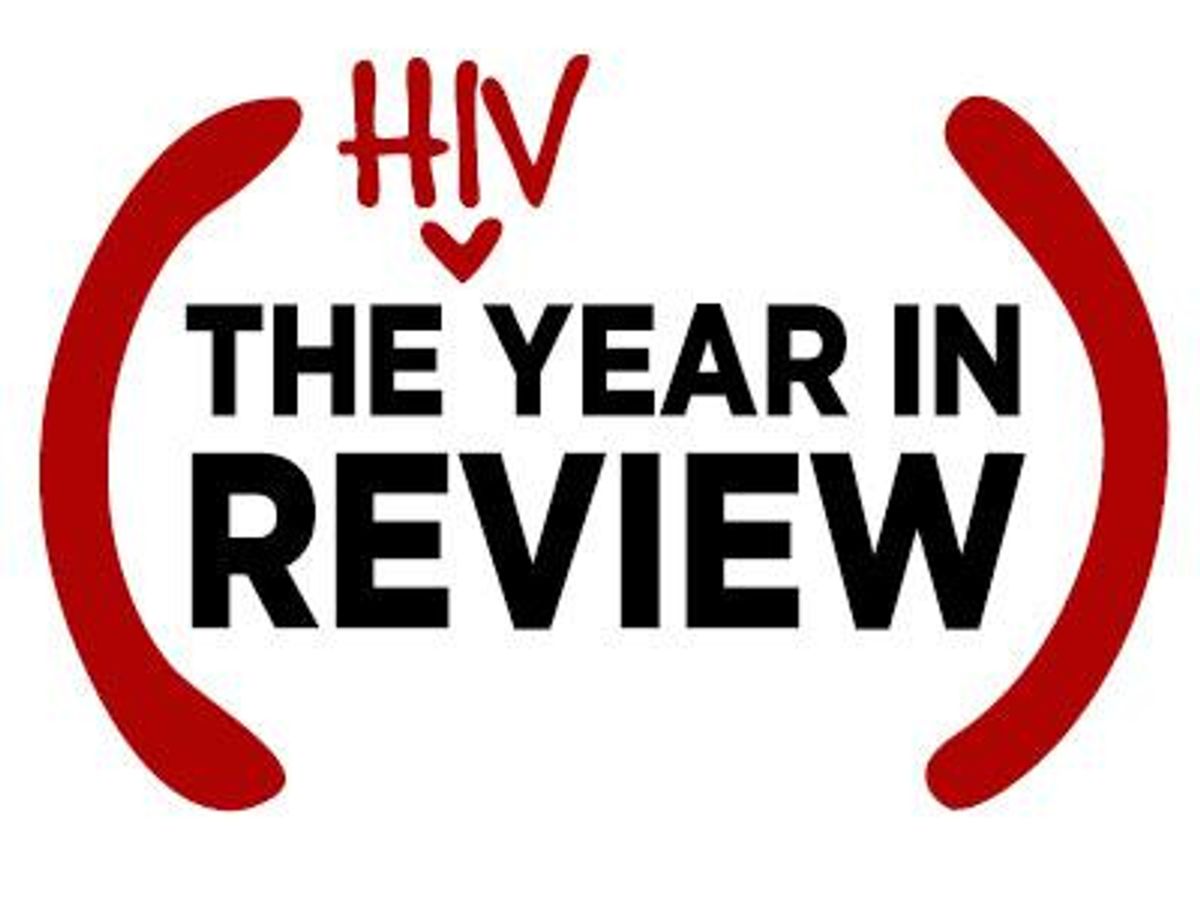Big Changes from Government
• Both the Centers for Disease Control and Prevention and the World Health Organization came out in support of PrEP, or pre-exposure prophylaxis, for sexually active gay men as an HIV prevention measure.
• The United Nations Joint Programme on AIDS predicted it will be possible to end the AIDS epidemic in urban areas by 2030, and leaders of major cities around the world pledged to help make this happen. New York State is being even more ambitious; Gov. Andrew Cuomo announced an initiatives to end AIDS by 2020.
 Organizations Took Charge
Organizations Took Charge
• Kevin Robert Frost, CEO of amfAR, the Foundation for AIDS Research says there’s never been a more optimistic time in research to cure or prevent HIV. That’s why amfAR committed to investing $100 million over the next six years to find a broadly applicable cure by 2020, dubbed the Countdown to a Cure campaign.
• “This is the moon shot of our generation,” said Frost, comparing the goal of a cure by the end of this decade to President Kennedy’s promise to put a man on the moon before the close of the 1960s, a promise that was indeed realized.
• Meanwhile GMHC, with support of the doctors on its board—Frank Spinelli (see page 35) and Demetre Daskalakis, New York City’s new chief of HIV prevention—held a series of town hall meetings in the city and on Fire Island to educate people on the use of PrEP and to advocate for its use among sexually active young gay and bi men. One Is Still the Loneliest Number
One Is Still the Loneliest Number
• Timothy Ray Brown, the Great Berlin Hope, has stayed HIV-free for several years following a bone marrow transplant, but he remains the only person thought to be technically “cured” of HIV. The Mississippi child reportedly cured of HIV with antiretrovirals and the two Boston men who were HIV-free after stem-cell transplants have all seen a resurgence of the virus.  Girl Power Solves a Mystery
Girl Power Solves a Mystery
• What makes a HIV breakthrough even better? When the discovery is based on the science project of a 13-year-old girl. Elan Filler spent a summer gathering soil and tree samples from areas around Los Angeles and helped researchers pinpoint the environmental source of fungal infections that have sickened people with HIV or AIDS in Southern California for decades. The study, which appeared in PLOS Pathogens, found strong genetic evidence that three tree species—Canary Island pine, Pohutukawa, and American sweetgum—can serve as environmental hosts and sources of Cryptococcus, which encompasses a number of species including C. gattii and causes life-threatening infections of the lungs and brain that are responsible for one third of all AIDS-related deaths.  A Killer Condom & a New Tampon
A Killer Condom & a New Tampon
• A gel-coated condom with the ability to kill off 99.9 percent of viruses—including HIV and HPV—is hitting store shelves in Australia. A joint venture between Starpharma, the Aussie pharma company that developed VivaGel (a vaginal microbicide), and Ansell (a global protection firm), the LifeStyles Dual Protect VivaGel condom is the world’s only condom offering barrier protection and a proprietary antiviral compound in the lubricant. No word on when, or if, it will come to the States.
• A new tampon-like device (but not an actual tampon), developed by a team of bioengineers at the University of Washington, uses fibers that dissolve almost immediately after contacting moisture to deliver a high dose of the anti-HIV drug Selzentry (maraviroc), which could serve to prevent HIV infection. The tampon, still 10 years away from market, could be inserted into the vagina using fingers or an applicator. A vaginal ring delivering a combo of maraviroc and Truvada has shown promise but is still in trials, as is Selzentry as PrEP (if it works as effectively as Truvada, it’s likely to push the latter drug aside because it would lower concerns about resistance).  Meds in the News
Meds in the News
• Istodax (generic: romidepsin) successfully “kicked” HIV out of reservoirs in patients in a recent study. Bionor Pharma’s strategy involves using Istodax, an HDAC inhibitor, to “kick” the virus out of reservoirs, making the HIV-infected cells visible to the immune system; the immune response generated by its therapeutic vaccine, Vacc-4x, is then expected to attack and eliminate the infected cells. Conventional HIV medication has failed to address the virus in reservoirs and sanctuary regions, which has been an obstacle to an HIV cure. The first phase of the study established the optimal dose of Istodax; the second phase will include vaccination with Vacc-4x followed by treatment with Istodax once a week for three weeks, then an interruption of antiretroviral therapy for 18 weeks to see if the immune system continues to suppress the viral load.
• Tivicay suppresses HIV even in those who are drug-resistant. In a new study, the recently approved HIV integrase inhibitor demonstrated high rates of viral suppression among people who are resistant to other HIV antiretroviral drugs, with no resistance detected during the 96 weeks of follow-up.
• Triumeq (a combination of Tivicay and Epzicom) became the newest single-pill HIV treatment. ViiV Healthcare’s first dolutegravir-based fixed-dose combination pill, Triumeq is the first single-pill regimen that combines the integrase strand transfer inhibitor Tivicay (generic name: dolutegravir) with the nucleoside reverse transcriptase inhibitor Epzicom (a combo of abacavir and lamivudine).
• Janssen and ViiV Healthcare announced they are developing a new single-tablet regimen containing Janssen’s Edurant (the nonnucleoside reverse transcriptase inhibitor rilpivirine) and ViiV’s Tivicay (the integrase inhibitor dolutegravir). If the new pill is successfully developed and approved by the Food and Drug Administration, the companies say it could offer people living with HIV who are virologically suppressed an option to switch from a standard three-drug therapy to a two-drug regimen without a nucleoside reverse transcriptase inhibitor.
• HIV patients receiving alpha interferon may go into long-term remission after initial highly active antiretroviral therapy is discontinued, according to a study by the Wistar Institute. Alpha interferon resulted in control of HIV replication in 45 percent of study participants even after they stopped antiretroviral therapy. Decreased levels of latent HIV also occurred in patients in which HIV replication was suppressed by antiretroviral drugs, supporting a role for immune-mediated approaches in HIV suppression and the potential eradication of latent virus that is required for a cure. Based on the study, Hemispherx Biopharma teamed with a South African biotech firm to seek approval from the South African government to do a broader study on Alferon N, the only FDA-approved natural interferon, in the suppression of HIV replication and the reduction or elimination of latent HIV. In the Labs
In the Labs
• Scientists believe they can identify which viruses cause infection, something that could lead to drugs that target more virulent strains. While there are many different strains of HIV, 76 percent of all infections arise from a single virus. Researchers at the University of Michigan have been able to identify that virus using a key protein, according to a study published by Nature Nanotechnology. Researcher Wei Cheng of the U-M College of Pharmacy believes the study is the first in which researchers were able to capture HIV at the single-particle level, so if it differed by even one molecule, their instruments could detect the difference. Researchers found that the virus particles have different quantities of a key protein that enables virulence, and the protein-rich virus particles were more infectious than the others.
• A family of proteins that promotes virus entry into cells also has the ability to block the release of HIV, according to research out of the University of Missouri published in the Proceedings of the National Academy of Sciences. One type of cellular protein (T cell immunoglobulin and mucin domain) has previously been shown to promote entry of some highly pathogenic viruses into host cells. Now the MU researchers have found that the same protein possesses a unique ability to block the release of HIV-1 and the Ebola virus. This knowledge may help scientists develop ways to slow production of these viruses. The Quest for a Cure Continues
The Quest for a Cure Continues
• According to headlines, everything seemed to hold “the key to a cure” this year from soy sauce (promising) to ozone (pure quackery). Among the interesting ones this year:
• The Cure: Soy sauce. The Facts: Researchers at the University of Missouri have confirmed that a flavor-enhancing molecule in the popular condiment, EFdA, may also be used to develop HIV-fighting compounds, and the medicine could be 70 times more powerful than tenofovir (Viread), a leading HIV drug therapy. “Patients who are treated for HIV infections with tenofovir eventually develop resistance to the drugs that prevents an effective or successful defense against the virus,” said Stefan Sarafianos, an associate professor at the University of Missouri School of Medicine. “EFdA, the molecule we are studying, is less likely to cause resistance in HIV patients because it is more readily activated and is less quickly broken down by the body as similar existing drugs.” The research confirms the initial findings of a Japanese soy sauce company, which accidentally discovered the molecule in 2001, and Merck is currently at work to develop a treatment using it. Cure Status: Long way off.
• The Cure: Tobacco. The Facts: Researchers from the University of Louisville got a five-year, $14.7 million grant from the National Institutes of Health to develop a gel made with tobacco plants injected with a protein that prevents the spread of HIV infection. The research team will work with a protein called Griffithsin (GRFT), a carbohydrate combining protein that is found in red algae. In laboratory studies, GRFT has been shown to act against HIV. The algae-based product surrounds the sugars around HIV cells and prevents those cells from getting in contact with uninfected cells. Kenneth Palmer, Ph.D., director of the Owensboro Cancer Research Program at the University of Louisville, is leading the team of researchers who will work toward developing a gel with those components that can be used during sex. Researchers will inject a copy of the protein into a tobacco mosaic virus that will carry the protein into the tobacco leaves. Then the leaves will be harvested after 12 days to extract the mass-produced protein to develop it into the vaccine gel. “Our goal is to optimize the delivery system of the protective agent, which in this case is a gel, and determine its safety and estimates of its efficacy, leading to a first-in-humans clinical trial,” Palmer said. Researchers from several other universities and biomed firms are involved. Cure Status: Long way off.  Blocking a Virus
Blocking a Virus
• Population Council researchers announced in PLOS One that they had developed a safe, stable microbicide gel that can prevent the transmission of HIV, human papillomavirus, and herpes simplex virus 2 in both the vagina and rectum. The USAID-funded animal study also provides the first data that the gel is effective against multiple strains of HIV and can maintain its strength in the vagina against all three viruses for at least eight hours prior to exposure. A Phase I safety trial of the gel began enrolling participants in May. The gel, known as MZC, contains two potent antiviral agents, MIV-150 and zinc acetate, and because it targets multiple viruses, it may be more effective at stopping HIV transmission than those that target HIV alone.
• It’s a long way from market, but researchers from the University of Texas, in collaboration with Humberto Lara Villegas, a specialist in nanoparticles and virology from the University of Monterrey, Mexico, have created a new vaginal cream that prevents HIV transmission using silver nanoparticles to block the virus from entering CD4 immune cells. Science Daily reported that the vaginal cream “has been tested in samples of human tissue and has proven the efficiency of silver nanoparticles to avoid the transmission of the virus through cervical mucous membrane.” The cream takes less than a minute to begin working and can last up to 72 hours, and because of the unusual blocking process, it would provide protection for both the woman and her partner, regardless of who might be carrying HIV. The cream will next go into testing on mice that accept human cells.
• Geraniums (technically extracts of the geranium plant Pelargonium sidoides) block HIV from entering human cells, according to scientists from Germany. Research reported in PLOS One showed these extracts protect blood and immune cells from HIV-1 infection by blocking attachment of virus particles to host cells and thus effectively preventing the virus from invading cells. In Germany, Pelargonium sidoides extracts are licensed as a herbal medicine to treat respiratory infections. Scientists say the extracts could be developed into an anti-HIV treatment perfect for resource-limited settings, since they are easy to produce and do not require refrigeration. We’re Starting to Win in the Courts
We’re Starting to Win in the Courts
• Lambda Legal, the Sero Project, and dozens of anticriminalization activists who gathered at the groundbreaking HIV is Not a Crime conference in June at Grinnell College celebrated the nation’s first win: In a pivotal appeal litigated by Lambda Legal, the Iowa Supreme Court set aside the conviction of Nick Rhoades, an HIV-positive Iowan who was initially sentenced to 25 years in prison, with required registration as a sex offender, after a single sexual encounter with another man during which they used a condom. In reversing the conviction, the court questioned whether HIV-positive individuals who have a reduced viral load as a result of effective treatment could transmit HIV through sexual activity. The state has now changed its archaic HIV criminalization law, and the Department of Justice advised states to eliminate such prosecutions absent clear evidence of intent to harm and a significant risk of actual transmission; the DOJ had analyzed such laws in collaboration with the Centers for Disease Control and Prevention. “This is a watershed moment in the fight to decriminalize HIV. When the country’s leading law enforcement agency—working hand in hand with the country’s leading public health authority—reaches the conclusion that particular laws and criminal prosecutions are working at cross purposes to our national strategy for ending the HIV/AIDS epidemic, it is time for those with the power to end these prosecutions to take immediate action,” said Scott Schoettes, HIV project director for Lambda Legal and a new appointee to the Presidential Advisory Council on HIV/AIDS.  We’re Winning the Fight Against AIDS, sort of
We’re Winning the Fight Against AIDS, sort of
• St. Paul’s Hospital in Vancouver, Canada, shut down its dedicated AIDS ward, open since 1997, because it no longer has enough patients. In 1997, one person died of AIDS complications every day there, but improvements in treatment and St. Paul’s innovative programs have reduced AIDS-related deaths by 80 percent since then.But Still Losing in the Media
• Several men (and the occasional woman) were arrested and tried for intentionally spreading HIV, the majority of whom did not transmit HIV and many who either wore a condom or have an undetectable viral load and therefore little chance of transmitting HIV. But their names and accusations about their status and behavior were published in local papers. In one example, college wrestling star Michael Johnson’s story went viral after a guy he had sex with called the cops. Read Steven Thrasher’s article in BuzzFeed for an analysis of how the intersection of race, criminal justice, and AIDS hysteria work in this case, which is ongoing.

 Organizations Took Charge
Organizations Took Charge One Is Still the Loneliest Number
One Is Still the Loneliest Number Girl Power Solves a Mystery
Girl Power Solves a Mystery A Killer Condom & a New Tampon
A Killer Condom & a New Tampon Meds in the News
Meds in the News In the Labs
In the Labs The Quest for a Cure Continues
The Quest for a Cure Continues Blocking a Virus
Blocking a Virus We’re Starting to Win in the Courts
We’re Starting to Win in the Courts We’re Winning the Fight Against AIDS, sort of
We’re Winning the Fight Against AIDS, sort of 










































































